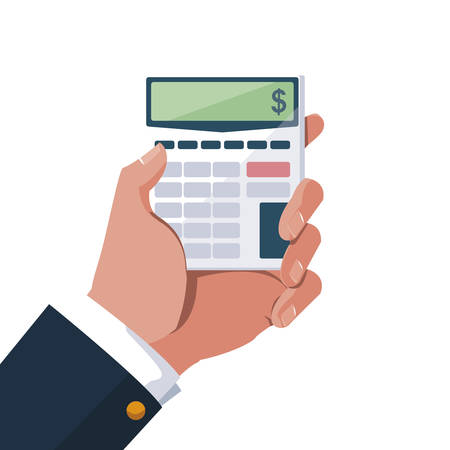1. Understanding the Catch-Up Contribution Rules
If you’re 50 or older and concerned about having enough saved for retirement, it’s crucial to understand how IRS catch-up contribution rules can help boost your nest egg. For 2024, the IRS allows individuals aged 50 and above to make additional “catch-up” contributions beyond the standard annual limits for retirement accounts like 401(k)s and IRAs. Specifically, you can contribute an extra $7,500 to your 401(k) on top of the regular $23,000 limit, bringing your total to $30,500 for the year. With IRAs, the catch-up amount is $1,000 over the standard $7,000 limit, totaling $8,000 annually. To be eligible, you must reach age 50 at any time during the calendar year, regardless of when your birthday falls. These rules apply whether you’re still working full-time or part-time and are designed to give late savers a chance to ramp up their retirement savings. By understanding these guidelines and maximizing your contributions, you can take meaningful steps toward securing a more comfortable financial future.
2. Analyzing Your Monthly Cash Flow
If you want to free up cash for catch-up retirement contributions, the first crucial step is to gain a clear understanding of your monthly cash flow. By tracking your income and expenses, you can identify spending patterns and discover opportunities to reclaim money that’s slipping through the cracks. Here’s a step-by-step guide using budgeting apps or spreadsheets that are popular in the U.S.
Step 1: Gather Financial Data
Start by collecting your pay stubs, bank statements, credit card bills, and receipts from the past three months. This will give you a complete picture of where your money comes from and where it goes.
Step 2: Choose Your Tracking Method
You have two main options—budgeting apps (like Mint, YNAB, or EveryDollar) or a simple spreadsheet (using Excel or Google Sheets). Apps often sync automatically with your bank accounts for real-time tracking, while spreadsheets offer more customization if you prefer hands-on control.
Sample Monthly Cash Flow Table
| Category | Monthly Income ($) | Monthly Expense ($) |
|---|---|---|
| Salary/Income | 5,000 | – |
| Housing (Rent/Mortgage) | – | 1,500 |
| Utilities | – | 200 |
| Groceries | – | 600 |
| Transportation (Gas/Transit) | – | 250 |
| Dining Out/Coffee Shops | – | 300 |
| Subscriptions/Streaming Services | – | 60 |
| Savings/Investments | – | 300 |
| Total | 5,000 | 3,210 |
| Net Cash Flow (Income – Expenses) | $1,790 Available to Reallocate! | |
Step 3: Identify Opportunities to Cut Back
Once you see all categories laid out, look for areas where you can trim expenses without sacrificing quality of life. Common culprits include dining out, unused subscriptions, and impulse buys. Small changes—like brewing coffee at home or switching streaming plans—can add up fast.
Action Tip:
Create a “wants vs. needs” column in your spreadsheet or app. Mark which expenses are non-essential so you can easily spot potential savings to redirect toward your retirement catch-up plan.
Step 4: Set Up Automatic Tracking and Alerts
If you use an app, set up alerts for overspending in specific categories. With spreadsheets, schedule a weekly review session to update numbers and monitor progress toward your retirement goals. Consistency is key to making lasting improvements.
The more diligently you track and analyze your cash flow, the easier it becomes to find extra dollars each month—money that can be redirected into catch-up contributions for your future security.

3. Cutting Out Unnecessary Spending
One of the fastest ways to free up cash for catch-up retirement contributions is by trimming unnecessary expenses from your monthly budget. Start with a close look at recurring subscriptions—think streaming services, gym memberships, or digital news outlets you rarely use. Cancel or pause those that don’t add real value to your daily life. For those you want to keep, check if there’s a less expensive plan or a bundled offer available.
Renegotiating Monthly Bills
Don’t assume your current rates for internet, cable, or insurance are set in stone. Call your providers and ask about promotions, loyalty discounts, or competitor pricing—they often have unadvertised deals for customers who ask. Even shaving $10–$20 off several bills can add up significantly over the course of a year, giving you more room to boost your retirement savings.
Prioritizing Value Over Impulse
Practice value-driven decision-making by distinguishing wants from needs. Before any discretionary purchase—a new gadget, dinner out, or even daily coffee runs—ask yourself: Does this align with my financial goals? Could this money be better used growing my future nest egg? By making mindful choices and focusing on what truly enriches your life, you’ll find it easier to redirect funds toward your retirement catch-up efforts without feeling deprived.
4. Smart Ways to Save on Essentials
Freeing up cash for catch-up retirement contributions doesn’t mean sacrificing your quality of life. By optimizing how you spend on everyday essentials, you can redirect meaningful savings toward your future. Here are some practical strategies:
Grocery Shopping & Meal Planning
Plan your meals for the week before hitting the store and stick to a shopping list to avoid impulse buys. Consider using discount grocery chains or warehouse clubs for bulk items, and try generic brands—they often match national brands in quality.
| Tip | Potential Savings |
|---|---|
| Create a weekly meal plan | $20–$40/week |
| Use digital coupons & loyalty apps | $10–$30/week |
| Buy seasonal produce | $5–$15/week |
| Limit takeout meals | $25–$50/week |
Utility Savings Without Sacrifice
Simple habits like turning off lights, unplugging electronics, and running appliances during off-peak hours can make a big difference. Upgrade to LED bulbs, install programmable thermostats, and use ceiling fans to reduce heating and cooling costs.
Quick Utility Hacks:
- Set thermostat 2–3 degrees lower in winter/higher in summer.
- Launder clothes in cold water and air dry when possible.
- Take advantage of local utility rebate programs for efficiency upgrades.
Clever Transportation Strategies
If you’re able, carpooling, using public transit, or biking just a few times a week saves money on gas and parking. For drivers, compare auto insurance rates annually and keep up with vehicle maintenance to prevent costly repairs later on.
Sample Monthly Transportation Savings:
| Strategy | Estimated Monthly Savings |
|---|---|
| Public Transit (vs. daily driving) | $100–$200 |
| Carpooling 2x/week | $30–$60 |
| Biking/Walking short trips | $20–$50 |
| Insurance rate shopping yearly | $10–$25 |
Leverage Community Resources
Tap into local libraries for free books, movies, and events; check out community centers for fitness classes or workshops; and browse neighborhood social media pages for free or low-cost activities. Many communities also offer food co-ops or farmers markets that provide fresh goods at lower prices.
The Takeaway:
By making intentional choices about your essential spending—without cutting corners on what matters—you can unlock cash flow that strengthens your retirement savings strategy today while maintaining the lifestyle you value most.
5. Automating Savings for Retirement
If you want to consistently free up extra cash and boost your catch-up retirement contributions, automation is your best friend. Setting up automatic transfers and payroll deductions can help take the guesswork—and temptation—out of saving. By making your savings invisible and untouchable until you need them, you’re more likely to stay on track with your financial goals.
How to Set Up Automatic Transfers
Most banks and credit unions in the U.S. offer easy online tools to schedule recurring transfers from your checking account into a retirement account like an IRA. Decide how much extra you want to contribute each month, then set up an automatic transfer for the day after payday. This “pay yourself first” strategy ensures that your savings happen before you have a chance to spend that money elsewhere.
Leveraging Payroll Deductions
If your employer offers a 401(k) or similar plan, increasing your contributions through payroll deduction is simple and effective. Log in to your benefits portal or talk to HR about raising your contribution percentage, especially if you’re eligible for catch-up contributions at age 50 or older. These deductions happen before taxes are taken out, helping reduce your taxable income while growing your retirement fund faster.
Pro Tip: Schedule Regular Reviews
Life changes fast—so should your savings! Put a reminder on your calendar every six months to review and increase your automated contributions as your budget allows. Even small increases add up over time thanks to compounding growth.
Why Automation Works
Automatic savings remove human error and procrastination from the equation, giving you the best shot at hitting those catch-up contribution targets without relying on willpower alone. By setting it and forgetting it, you’ll make real progress toward a comfortable retirement—without sacrificing today’s peace of mind.
6. Making the Most of Employer Benefits
Leveraging your employer’s benefits package is a powerful way to free up extra cash for catch-up retirement contributions. Many American companies offer a variety of perks that, if maximized, can significantly boost your savings potential.
Strategies for Maximizing Employer Matches
If your company offers a 401(k) or similar retirement plan with an employer match, make it a priority to contribute enough to get the full match. This is essentially “free money” and can substantially accelerate your retirement savings. Review your contribution levels annually—especially if you receive raises or bonuses—and adjust as needed to ensure you’re not leaving any matching dollars on the table.
Using Flexible Spending Accounts (FSAs)
Flexible Spending Accounts allow you to set aside pre-tax dollars for healthcare or dependent care expenses, reducing your taxable income and increasing your take-home pay. By planning your annual medical or childcare costs and contributing accordingly, you’ll have more post-tax cash available to redirect toward retirement accounts. Just remember that FSAs are generally “use it or lose it,” so estimate your needs carefully each year.
Revisiting Benefits Elections
Your annual open enrollment period is the perfect time to reassess all your benefit choices. Compare health insurance plans to see if there’s a more cost-effective option that meets your needs. Consider dropping underused extras like supplemental life or accidental death insurance if they no longer fit your financial goals. Every dollar saved from smarter elections can be reallocated directly into catch-up retirement contributions, helping you close the gap faster.
Drive Savings Through Smart Choices
In summary, making informed decisions about your employer benefits doesn’t just help with current expenses—it can unlock additional funds for your future. Take advantage of these programs and review them regularly to keep your budget aligned with your retirement goals.
7. Adjusting and Reviewing Your Budget Regularly
Staying on track with your retirement goals isn’t a “set it and forget it” task—it’s an ongoing process that requires regular check-ins. Life changes, from a new job to unexpected expenses or even achieving a financial milestone, can all impact your budget and your ability to maximize catch-up contributions. Make it a habit to review your budget at least once a quarter. Set reminders on your phone or calendar so you don’t forget. During these reviews, take an honest look at where your money is going and see if your spending aligns with your values and long-term goals.
If you notice you’re spending more in certain categories (like dining out or streaming services), see if you can redirect some of that cash toward your retirement accounts. Use apps or online tools to track expenses and spot trends—many Americans find that visualizing their spending helps them make smarter decisions. Also, remember to adjust your budget after any major life event: a raise, bonus, medical bill, or family change should prompt a fresh look at your finances.
Don’t be discouraged if you slip up now and then; the key is to get back on track quickly. Celebrate small wins when you’re able to increase your contributions, even by just a little. Over time, these regular reviews and adjustments will empower you to free up more cash for those crucial catch-up contributions, making sure you stay ahead as retirement draws closer.


